What Is a Freestanding Sculpture? – 3D Art Viewed in the Round
What is a freestanding sculpture, and what are some famous examples of freestanding sculpture in art? Many different types of sculptures are used for relaying a variety of artistic and conceptual messages, and carry an impact on their viewers through the notion of a physical and tangible presence. In this article, we will unpack the genre of freestanding sculpture, as well as compare it to the genre of relief sculpture, which is often mistaken for the former. Read on for an accurate and detailed analysis of freestanding sculpture!
Understanding the Genre of Freestanding Sculpture
When it comes to sculpture, there are numerous techniques that an artist can adopt structurally to add the most impact to the artwork and make it stand out. Many students easily find themselves confused with the different genres of sculpture that offer unique capabilities to enhance one’s concept. The art of creating a freestanding sculpture is defined by its own characteristics that set it apart from other forms of sculpture like relief sculpture, of which it is often confused with. So, what is a freestanding sculpture?
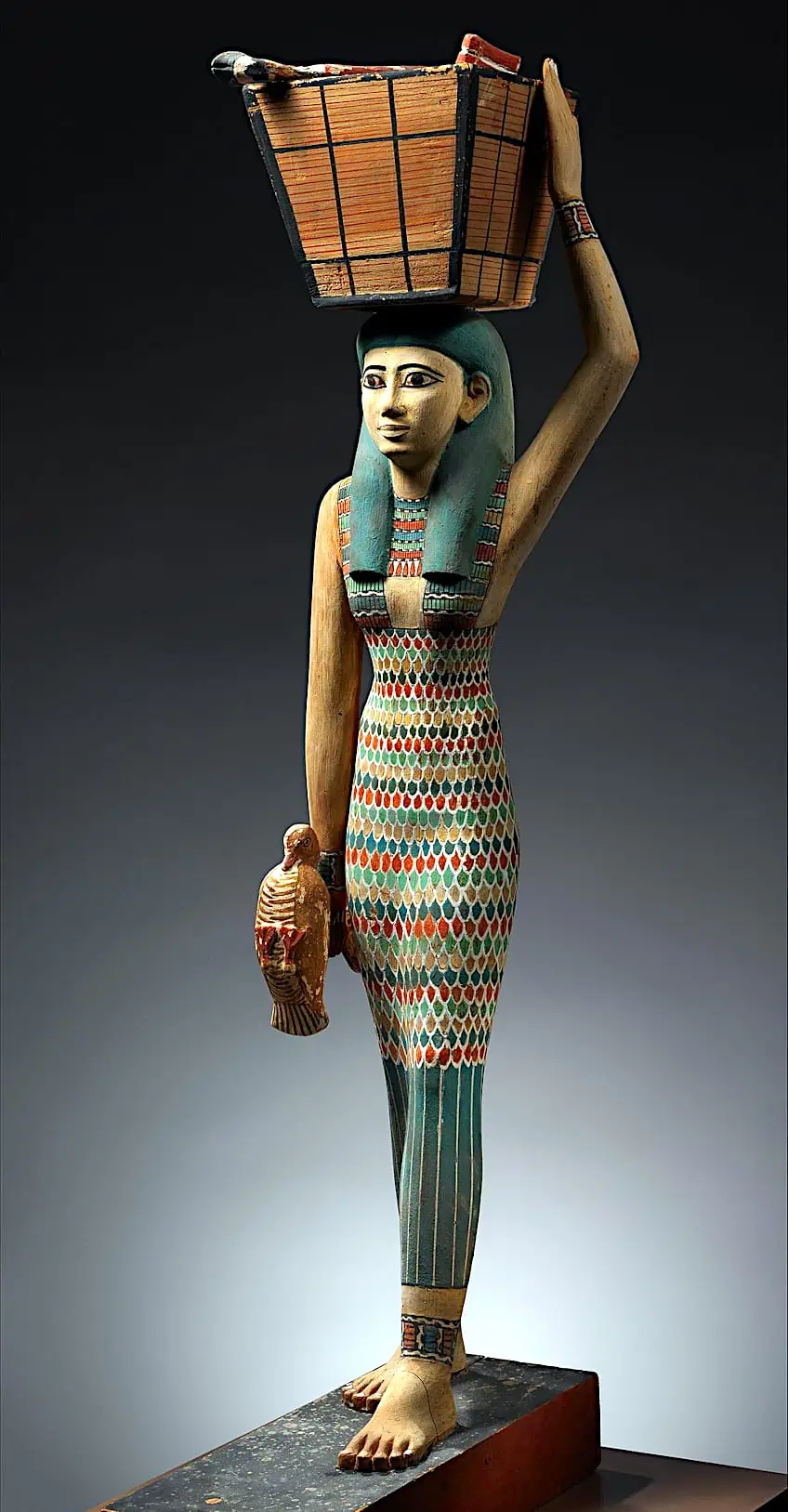
A freestanding sculpture is defined as any three-dimensional sculptural form that can be viewed from any angle. In other words, freestanding sculptures do not rely on a support structure and are academically referred to as “sculptures in the round”.
One of the best characteristics of freestanding sculptures is that they offer the viewer access to the detail and accessible perspectives of artwork.
Freestanding sculptures can be produced using both subtractive and additive techniques, which enable the artist to refine the work and engage the viewer from multiple visual angles.
Contextualizing the Freestanding Sculpture
To fully answer the question “what is a freestanding sculpture?” one can consider the context of the artwork. Artists who hone their freestanding sculpture techniques rely on their sense and understanding of how artworks and three-dimensional forms operate in their environment. The context of an artwork largely defines the reception of the artwork and the relationships that the sculpture forms with the room and the overall atmosphere of the space.
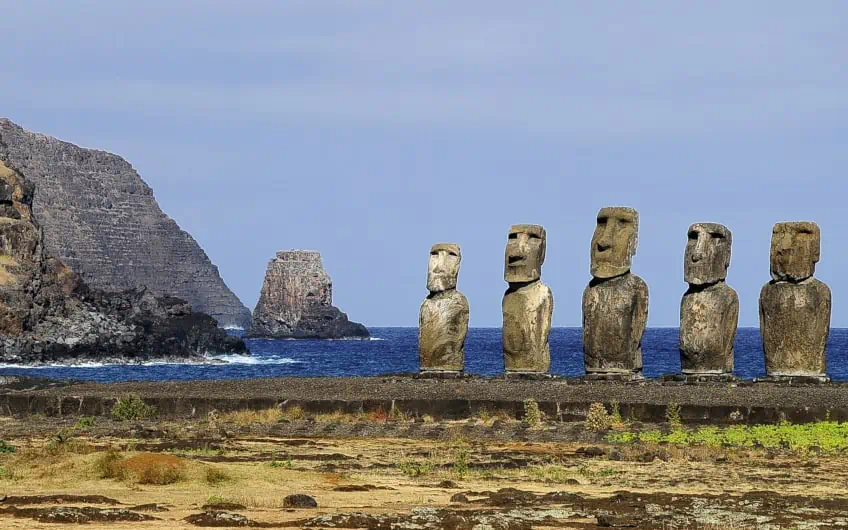
Freestanding sculptures are also commonly found in public spaces, mounted on a plinth or small pedestal in a well-known location to be viewed and appreciated from any angle. Some freestanding works are also monumental in scale and leverage their towering heights to emphasize the significance of the represented form and establish a sense of respect or importance to the location it is situated in.
Public freestanding sculptures are sculpted using durable materials, or conceptually, work with perishable materials to convey different meanings.
Materials such as stone or metal are excellent for ensuring the longevity and durability of the sculpture and can also feature in sculpture gardens, public parks, cemeteries, and ancient ruins.
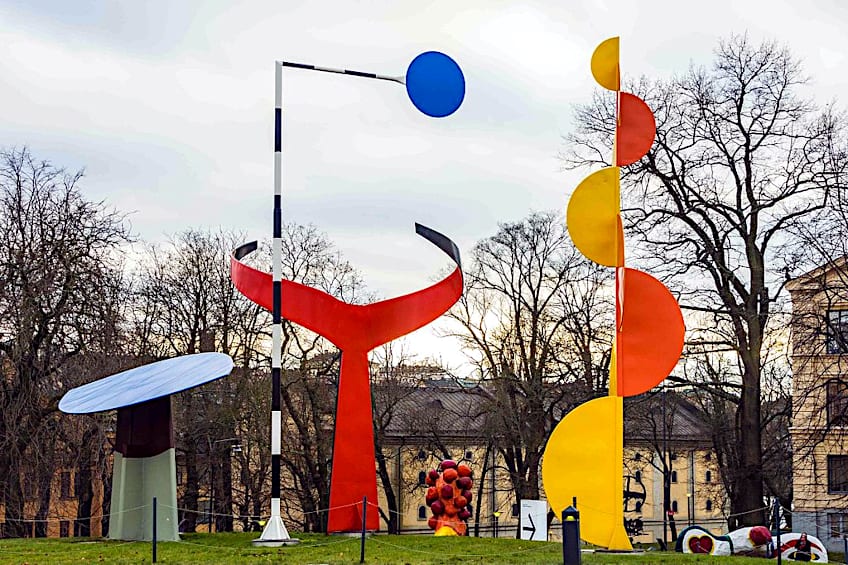
Differences Between Freestanding and Relief Sculpture
What are the differences between the genres of freestanding and relief sculpture? It is understood that freestanding sculptures are independent artworks that can be viewed from any side or moved and rotated freely.
The term “freestanding” has been adopted in architecture to describe structures that are also independent without the support of a wall or structure.
What distinguishes freestanding sculptures from relief sculptures is that the relief sculpture is not independent of its base, and is usually only partially defined.
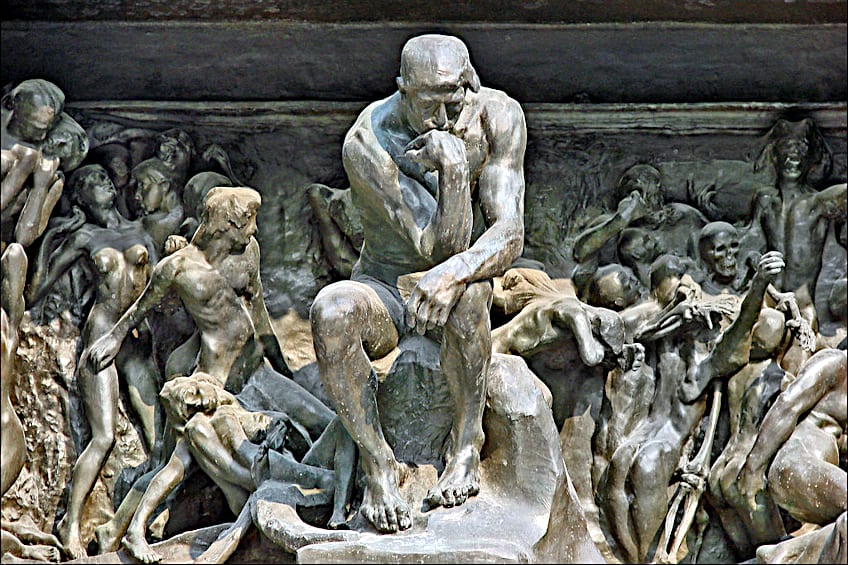
Relief sculptures can be both high-relief and low-relief and are attached to a background or surface. Low-relief sculptures are extremely flat and are typically attached to a façade or strong support surface such that the artwork is immovable. Freestanding sculptures support their weight and are generally produced from a single source or material that is transformed into a sculpture. Relief sculptures can be carved into a surface such as a panel or a wall and may have varying levels of projection to create a sense of depth.
Relief sculptures are primarily viewed from the front and have a limited ability to be viewed from all angles.
Famous Examples of Freestanding Sculpture
Now that you have an idea of what a freestanding sculpture is, we can now look at a few examples of freestanding sculptures from around the world that are considered pillars of sculpture.
The Nefertiti Bust (c. 1345 BCE) by Thutmose
| Artist Name | Thutmose (c. 14th century) |
| Date | c. 1345 BCE |
| Medium | Stucco-coated limestone |
| Dimensions (cm) | 48 (h) |
| Where It Is Housed | Neues Museum, Berlin, Germany |
Sculpted by one of the most favored artists in the royal Egyptian court, this famous freestanding bust of Nefertiti is one of the most iconic sculptures from 14th-century Egypt. The bust portrays the wife of King Akhenaten, who was the 10th ruler of the 18th dynasty in Egypt and ruled between the 1350s and 1330s BCE.

The bust was crafted by a sculptor known as Thutmose, after being discovered in his workshop in Amarna and has since become one of the most reproduced works from Egyptian art. The bust was unearthed in 1912 by German archaeologists, who smuggled the artifact out of Egypt in 1913 by concealing it in clay.
Today, the freestanding bust is also a major topic of repatriation debates since it remains in collection of the Neues Museum in Berlin.
David (c. 1440s) by Donatello
| Artist Name | Donato di Niccolò di Betto Bardi (1386 – 1466) |
| Date | c. 1440s |
| Medium | Bronze |
| Dimensions (cm) | 158 (h) |
| Where It Is Housed | Museo Nazionale del Bargello, Florence, Italy |
This famous bronze statue was the first Renaissance freestanding bronze work created by Donatello in the 1440s. The figure was initially sculpted in marble in 1408 after the biblical narrative of the heroic figure David who defeated the giant Goliath. The bronze cast statue was the first nude male bronze since antiquity and portrays David completely in the nude except for his boots, sword, and hat. While the process is undocumented, historians believe that the sculpture was commissioned by Cosimo de’ Medici for the Medici Palace and was created before Donatello’s death in 1466.
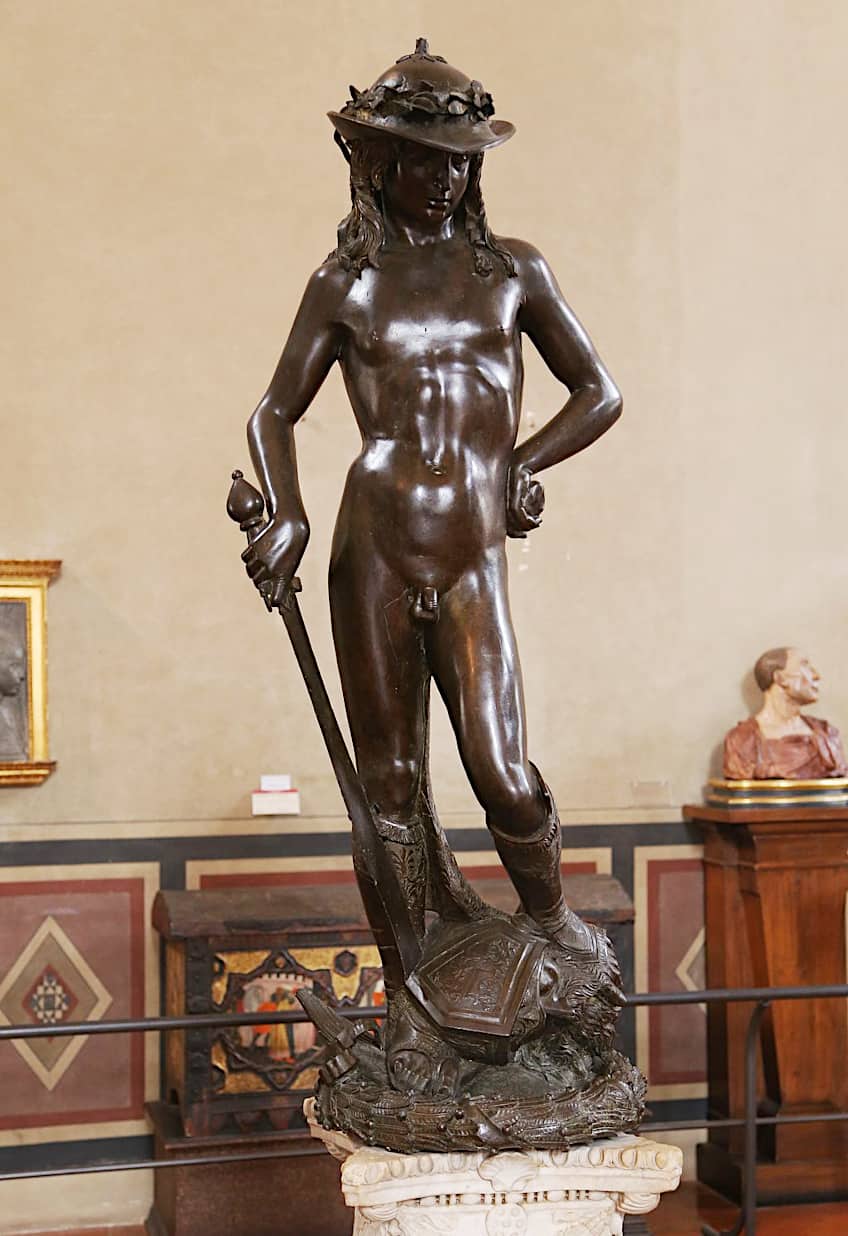
At the time, Florence was compared to the character of David, which was viewed as small in stature but with a longstanding history of defense against powerful enemies.
Donatello sculpted David with a gentle physique and smooth skin, to complement his youthful and prepubescent appearance.
Today, the famous freestanding bronze is viewed in some quarters as an erotic queer statue that presented the character in ways that suggest a lack of brute strength and a more quirky, poised version of the character.
The Statue of Liberty (1886) by Frédéric Bartholdi
| Artist Name | Frédéric Auguste Bartholdi (1834 – 1904) |
| Date | 1886 |
| Medium | Copper |
| Dimensions (cm) | 4605.5 (h) |
| Where It Is Housed | Liberty Island, New York City, United States |
The large Roman goddess of Liberty standing on Liberty Island in New York City is among the most famous examples of freestanding sculpture, which was created in parts of France and reassembled with a new pedestal in New York. The massive sculpture was implemented to solidify the relations between the United States and France and was designed by Frédéric Auguste Bartholdi, who designed the first model in 1870.
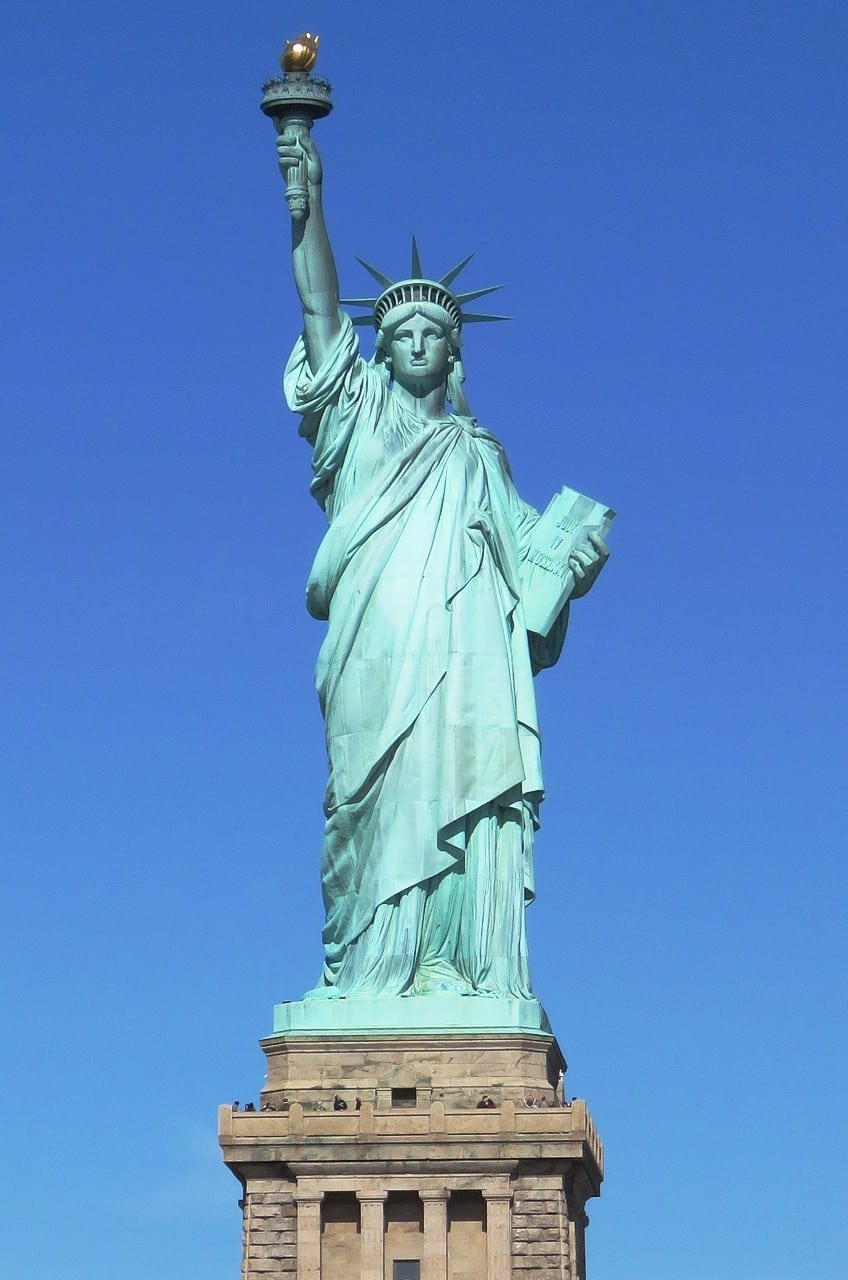
The official name of the statue is Liberty Enlightening the World and was transported in 214 copper, steel, and cast-iron pieces to Liberty Island, where it was reassembled to become one of the world’s best-known freestanding monuments.
Cloud Gate (2006) by Anish Kapoor
| Artist Name | Anish Kapoor (1954 – Present) |
| Date | 2006 |
| Medium | Stainless steel |
| Dimensions (cm) | 1280 x 2011.6 x 1005.8 (h) |
| Where It Is Housed | AT&T Plaza, Chicago, Illinois |
While Anish Kapoor’s mini bean sculpture in New York has not been well-received by critics for its placement in front of the Jenga Tower, this Chicago freestanding bean-shaped sculpture is called Cloud Gate and was created by the famous Contemporary sculptor Anish Kapoor in 2006. Cloud Gate was inspired by the iconic skyline of Chicago and created using advanced computer technology that slashed around 168 plates of stainless steel into precise forms, which were joined together and welded in place.
The towering central arch of the metallic bean on the underside allows people to experience the sculpture and its reflective surface while attracting crowds who often stop to take a few pictures with it. The stainless-steel skin of the sculpture was attached to the internal framework using flexible connectors, which allow the material to expand and contract in the event of extreme weather conditions.
The bean weighs 110 tons and stands 33 feet high at the center of AT&T Plaza in Millennium Park.
The Evolution and Impact of Freestanding Sculpture
The evolution of self-supporting sculptures can be traced back to ancient times in the works of the civilizations of the ancient Near East who constructed freestanding sculptures for religious and civic purposes. These sculptures were carved from stone and depicted the Gods, deities, and rulers.
It was not until the Romans that freestanding busts, and statues, aimed to capture the likeness of the individual with focus on the Realism of the human form.
While the Greeks excelled at depicting the idealized yet seemingly naturalistic human body, the Sumerians, Babylonians, and Egyptians favored more rigid and stylized forms. Medieval sculpture saw a move away from naturalism towards rigid forms, as the spiritual was emphasized over the material. Freestanding sculpture in the Renaissance period saw a revival in artistic styles previously used by ancient Greeks and Romans. Artists like Donatello and Michelangelo proved to create some of the most famous and beautiful freestanding sculptures that demonstrated their interest in naturalism and anatomical accuracy.

Freestanding sculptures of the Renaissance displayed strong emotional expression and dynamic movements, which brought classical subjects to life. Modern and Contemporary freestanding sculpture saw its evolution through its conceptual and technical developments. An expansion in materials in sculpture also enabled a diverse range of freestanding sculptures to emerge and experiment with abstract forms and concepts.
Prominent artists such as Alberto Giacometti and Auguste Rodin propelled early Modern sculpture through an exploration of form, the expressive potential of materials like bronze, and experimentation with texture.
The advancement of technology into the 21st century and the Contemporary era saw many artists embrace unconventional methods through the use of materials such as plastic and fiberglass as well as digital media to innovate alternative freestanding sculptures in the field of installation art. Such innovations challenged existing notions about three-dimensional artworks and their relationship to the environment by exploring themes of space, light, and scale.
The evolution of freestanding sculpture has seen numerous developments in style, which traversed abstract, hyper-realistic, and conceptual frameworks to engage viewers in new ways that enhance their sensory experience of sculpture. Over time, freestanding sculpture expanded its possibilities for expression and viewer engagement by adapting methods from the past and diversifying the realms of material construction, conceptual approach, and visual stimulation.
Frequently Asked Questions
What Is a Freestanding Sculpture?
Sculptures that are self-supporting and can be observed from multiple angles are considered to be freestanding sculptures. These are three-dimensional works that are not attached to a surface or background and allow for an exploration of the sculpture’s space and form. Freestanding sculptures are intended to be viewed in the round to invite viewers to engage in a visual study from various perspectives.
What Is the Most Famous Freestanding Sculpture?
The Statue of Liberty (1886) by Frédéric Auguste Bartholdi is considered to be the most famous freestanding sculpture in the world, located in New York City.
What Is the Tallest Freestanding Sculpture?
The Statue of Unity (2013 – 2018) in Gujarat, India is considered to be the tallest freestanding sculpture to date. The sculpture is 182 meters tall and portrays the image of the Indian activist and statesman, Vallabhbhai Patel.
Jordan Anthony is a Cape Town-based film photographer, curator, and arts writer. She holds a Bachelor of Art in Fine Arts from the University of the Witwatersrand, Johannesburg, where she explored themes like healing, identity, dreams, and intuitive creation in her Contemporary art practice. Jordan has collaborated with various local art institutions, including the KZNSA Gallery in Durban, the Turbine Art Fair, and the Wits Art Museum. Her photography focuses on abstract color manipulations, portraiture, candid shots, and urban landscapes. She’s intrigued by philosophy, memory, and esotericism, drawing inspiration from Surrealism, Fluxus, and ancient civilizations, as well as childhood influences and found objects. Jordan is working for artfilemagazine since 2022 and writes blog posts about art history and photography.
Learn more about Jordan Anthony and about us.
Cite this Article
Jordan, Anthony, “What Is a Freestanding Sculpture? – 3D Art Viewed in the Round.” artfilemagazine – Your Online Art Source. October 18, 2023. URL: https://artfilemagazine.com/what-is-a-freestanding-sculpture/
Anthony, J. (2023, 18 October). What Is a Freestanding Sculpture? – 3D Art Viewed in the Round. artfilemagazine – Your Online Art Source. https://artfilemagazine.com/what-is-a-freestanding-sculpture/
Anthony, Jordan. “What Is a Freestanding Sculpture? – 3D Art Viewed in the Round.” artfilemagazine – Your Online Art Source, October 18, 2023. https://artfilemagazine.com/what-is-a-freestanding-sculpture/.



